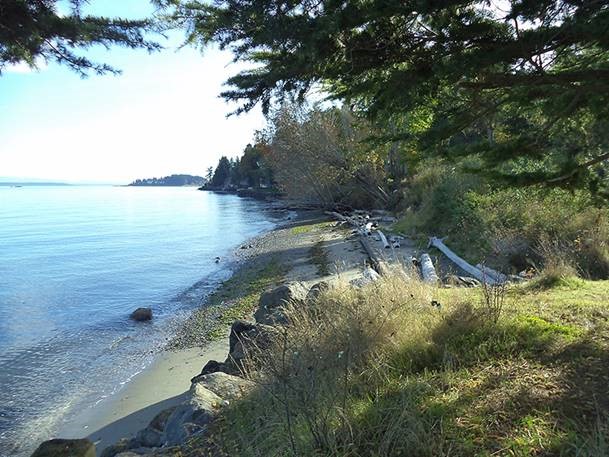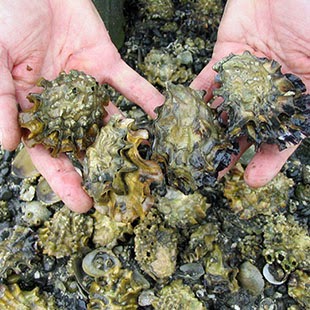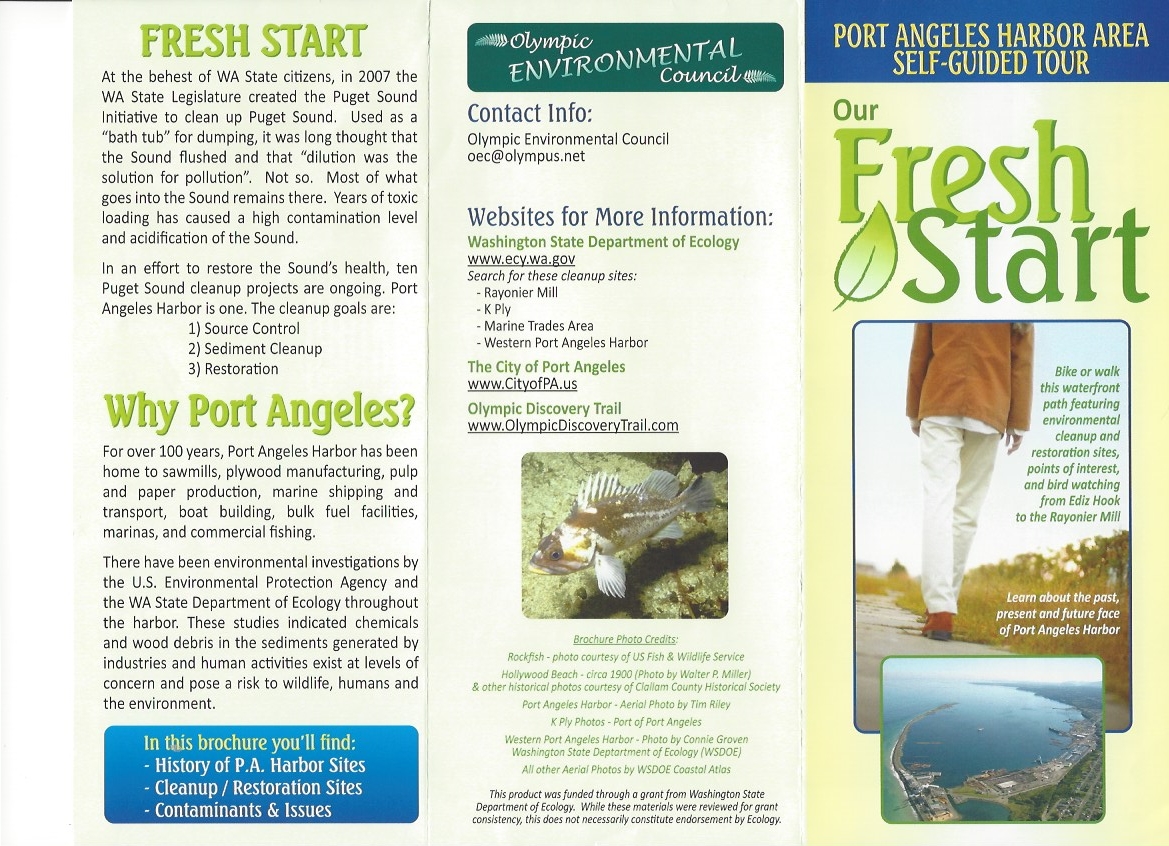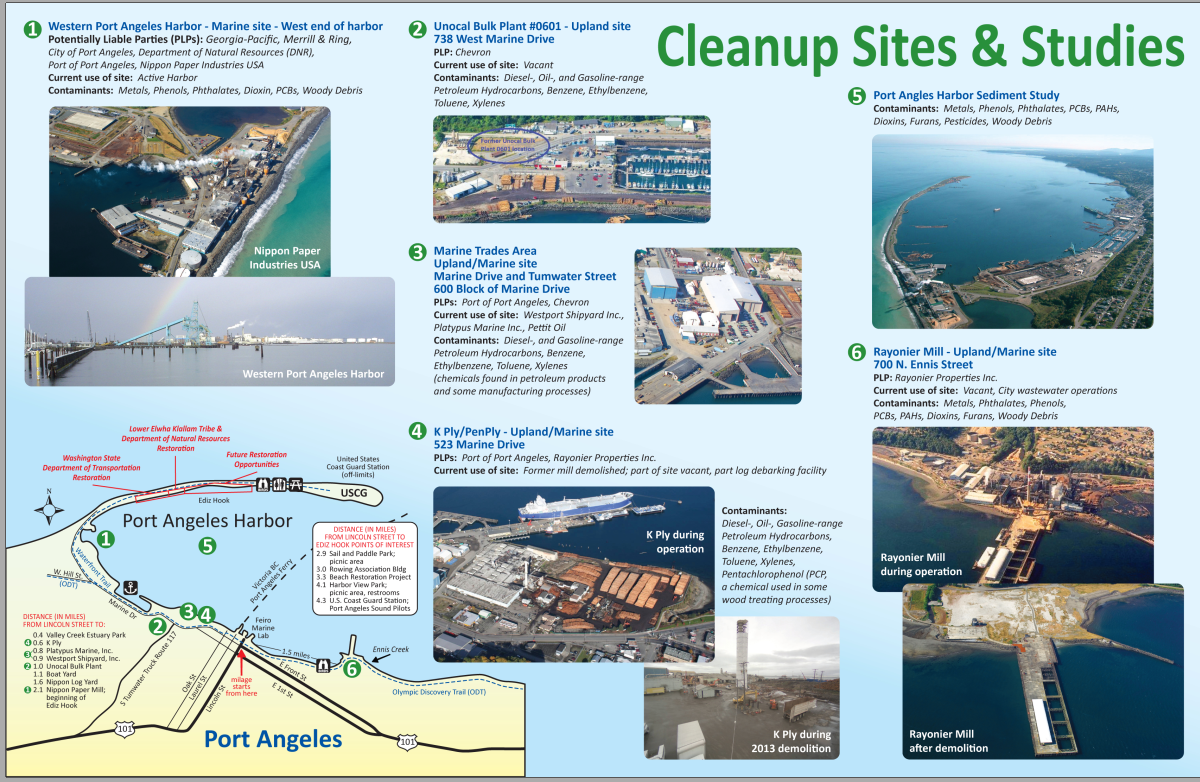Rayonier Mill - Port Angeles Harbor Hazardous Waste Cleanups
In 1997, the Olympic Environmental Council of the North Olympic Peninsula led a coalition of 14 non profits, including the Cascade Chapter of Sierra Club, and numerous citizens in effecting the cleanup of the Rayonier Mill at the east end of Port Angeles Harbor. The USEPA determined the mill site and water impacts as ranking for the USEPA Superfund Priorities List. In 2000, the cleanup was transferred to the WA State Department of Ecology Model Toxics Cleanup Program. In 2007, the entire Harbor was listed as the second highest priority cleanup area under the new Puget Sound Partnership Cleanup Initiative by the Washington State Department of Ecology.
Restoring the Environment after Toxic Contamination
Washington State Department of Ecology Blog, April 15, 2020

There’s big news in Port Angeles this month. The Western Harbor group has signed agreements to settle their Natural Resource Damages. The money will go toward environmental restoration projects. But what are Natural Resource Damages?
Natural Resource Damage Assessments
When a person or organization lets toxic substances into the environment, they have to pay for the cleanup. Toxic site cleanup is focused on protecting humans and the environment from exposure to toxic substances. That's what Washington's cleanup law, the Model Toxics Control Act, instructs and allows us to do. But sometimes that toxic contamination has already harmed the environment. In that case, the polluter may be liable not just for cleaning up the mess, but for restoring the environment they hurt. That's where the Natural Resource Damage Assessment (NRDA) process comes in (we pronounce it “nerd-uh”).
L ike in a civil lawsuit, the ‘victim’ is awarded compensation, called ‘damages.’ In this case, the victim is the environment. Since the environment can’t represent itself, a trustee council is made up of representatives from state, federal, and tribal governments. The trustee council assesses the damage and presents a claim to the people or organizations responsible for the damage — Potentially Liable Persons, or PLPs. Then the PLPs work or pay to restore habitat to make up for the loss and support future natural resources like fish, shellfish, and birds.
ike in a civil lawsuit, the ‘victim’ is awarded compensation, called ‘damages.’ In this case, the victim is the environment. Since the environment can’t represent itself, a trustee council is made up of representatives from state, federal, and tribal governments. The trustee council assesses the damage and presents a claim to the people or organizations responsible for the damage — Potentially Liable Persons, or PLPs. Then the PLPs work or pay to restore habitat to make up for the loss and support future natural resources like fish, shellfish, and birds.
In Port Angeles, the trustee council is made of representatives from the Lower Elwha Klallam, the Jamestown S’Klallam, and the Port Gamble S’Klallam tribes, the National Oceanic and Atmospheric Administration, the U.S. Fish and Wildlife Service, and Ecology. They are working on two separate NRDA agreements. The agreement that was just reached was for the Western Harbor area, and is open for public comment until April 26. The PLPs for that area are known as the Western Port Angeles Harbor Group. The details of the agreement with Rayonier, the PLP responsible for contamination on the other side of the harbor, are still being worked out, so they aren’t public yet.
Successfully completing the NRDA process settles the PLPs’ liability for the effects of the contamination. The Trustees can’t sue them over the same lost natural resources in the future, unless they contaminate the area again. The PLPs are still liable for cleaning up the contamination, if they haven’t already. Read the complete blog post from the Washington State Department of Ecology.
Cleanup, Not Coverup
Over 60 organizations and individuals sent the WA State Department of Ecology a letter asking that the Port Angeles Rayonier Pulp Mill hazardous wastes be removed from soils, groundwater and sediments, opposing the recommended options to cover up rather than removal. Read the October 28, 2019 cover letter and technical comments.
Learn about the Rayonier Mill-Port Angeles hazardous waste contaminants needing to be cleaned up, the other liable parties for the Harbor cleanup, and track the process of each of the cleanup areas. Additionally, see the historical timeline of Harbor businesses, and the Fresh Start Cleanup Tour map.
• Rayonier Mill, Inc.
• PenPly/K-Ply (Port of Port Angeles)
• Marine Trades Area
• Western Port Angeles Harbor
• Port Angeles Harbor Sediment Study


